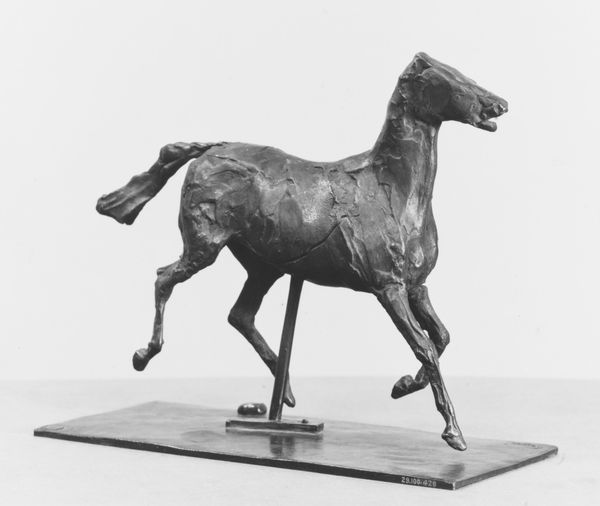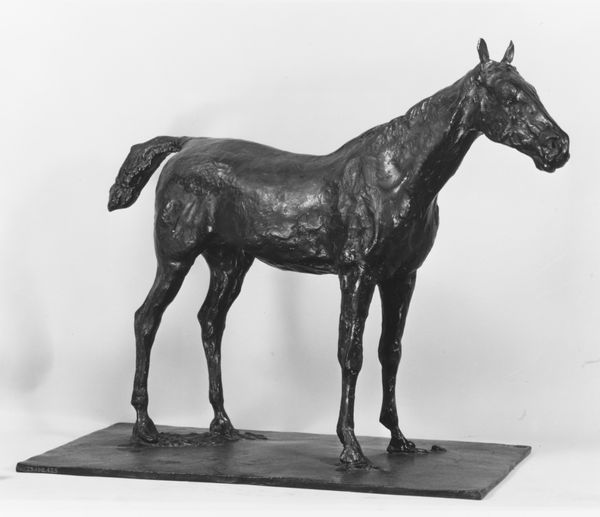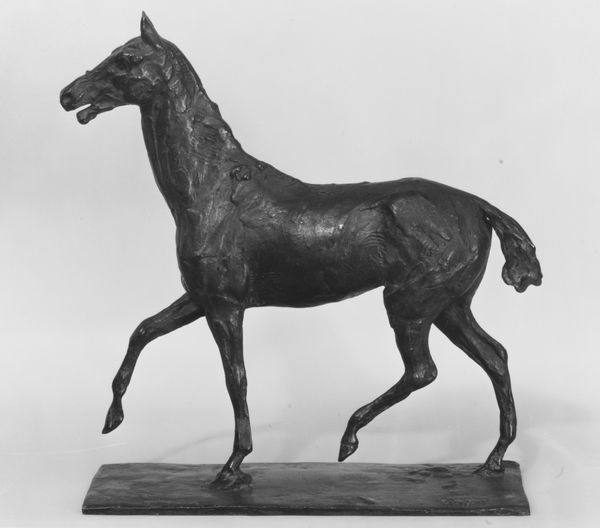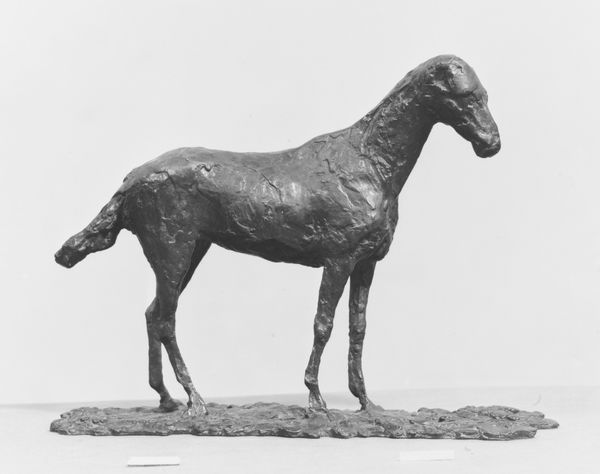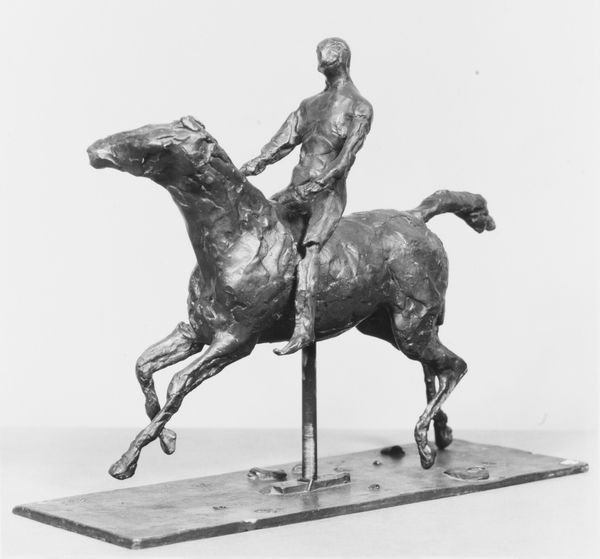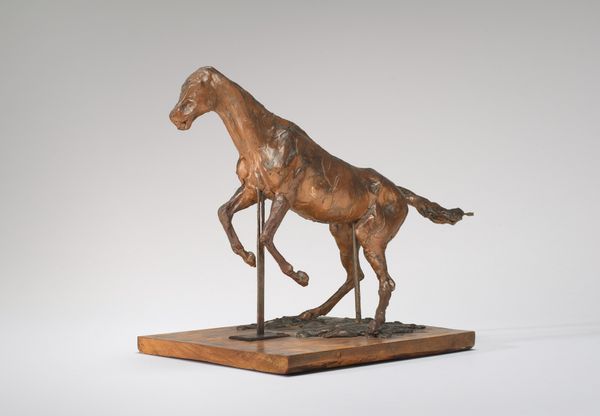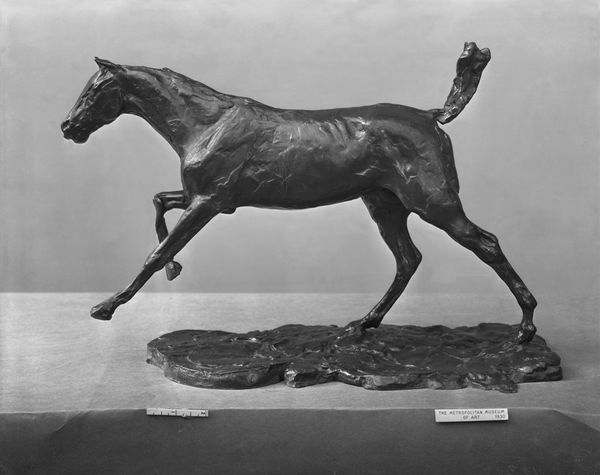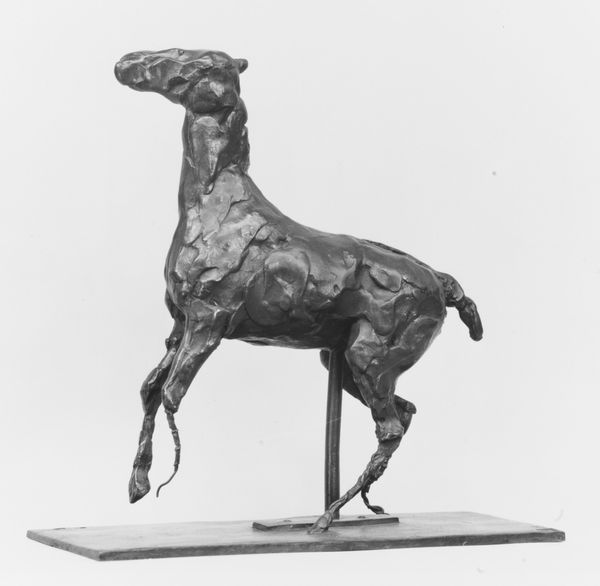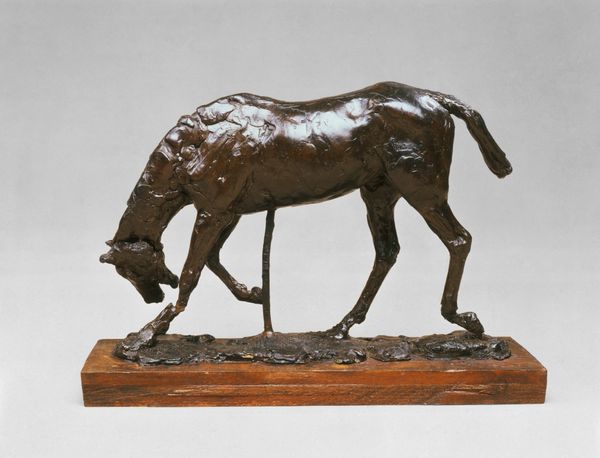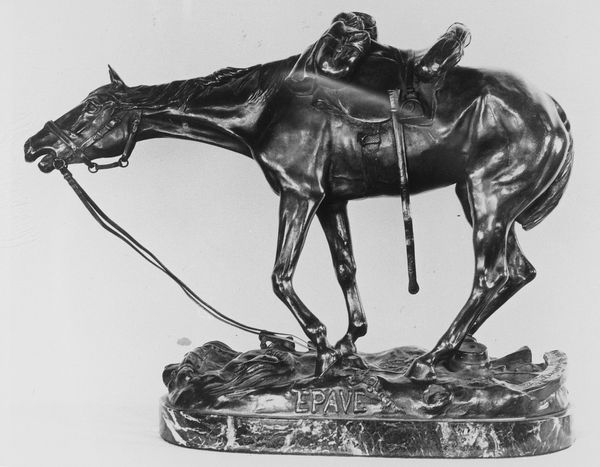
Dimensions: 11-3/8 x 15-5/8 x 9-3/8 in. (28.9 x 39.7 x 23.8 cm.)
Copyright: Public Domain
Curator: At first glance, this bronze sculpture arrests your attention with its latent motion and detailed surface. It is entitled “Horse Balking,” conceived by Edgar Degas sometime between 1883 and 1920. Editor: It has such an unsettling tension about it. The horse looks like it's mid-spook, refusing to move forward. I feel like I can hear the horse’s heavy breathing. Curator: That apprehension might stem from Degas' deliberate rendering of arrested movement. He captured not the flowing grace we often see in equine art but rather a moment of indecision. Editor: Absolutely. Its limbs are tensed, and the details on its face reveal such a powerful moment of defiance. There is a strong contrast between what it wants to do and what the rider is telling it to do. And there is an obvious sense of disharmony here. Curator: Degas was fascinated by horses. Equestrian subjects recur throughout his career, usually horses in motion, ballet dancers. It's as if he tried to immortalize the transient. Editor: It makes you wonder, doesn't it? What exactly has startled the poor creature? Is it a shadow, a sound, a memory? The lack of explicit narrative is so intriguing. Curator: Well, this bronze also signifies how the 19th century was fascinated by both realism and the fleeting moment. Think of how early photography began to influence artists, not just in painting but in sculpture, too. Editor: I am quite familiar with his approach, and perhaps it shows Degas' ability to challenge tradition. To not idealize, but to show raw, immediate experience. He captures so accurately this fragile yet determined moment in its form. I feel moved, strangely. Curator: “Horse Balking” certainly represents Degas’ experimental mindset. He seems unconcerned with idealized beauty, and interested instead in freezing an authentic, psychologically charged fragment of reality in sculptural form. Editor: Ultimately, what stays with me is the artist’s understanding of the push-and-pull dynamic between instinct and will, fear and bravery—embodied by this stubborn yet sensitive creature. Curator: Indeed, and through his singular vision, Degas manages to convey the drama within that fraught and frozen moment in time.
Comments
No comments
Be the first to comment and join the conversation on the ultimate creative platform.

